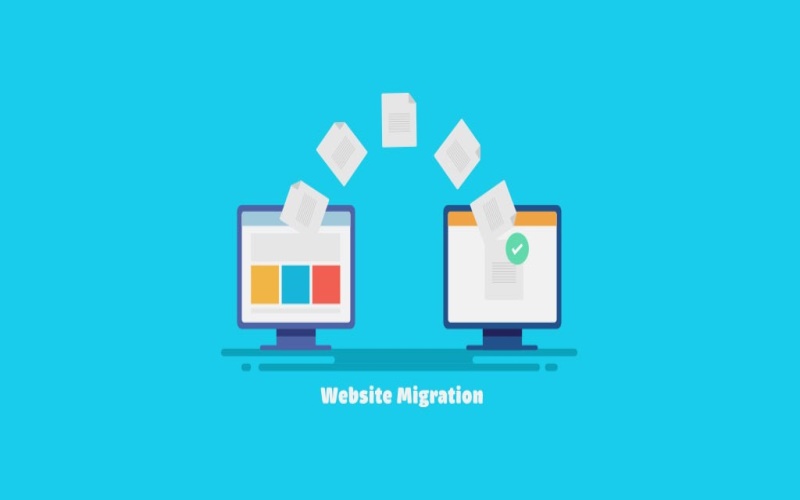What Are Website Migration Services?
Website migration services involve the process of transferring a website from one environment to another. This could mean moving to a new domain, upgrading to a different hosting provider, switching content management systems (CMS), or restructuring the site for better performance and SEO optimization. A well-executed website migration ensures minimal downtime, maintains search engine rankings, and enhances user experience.
Types of Website Migrations
There are different types of website migrations, each catering to specific needs:
1. Domain Migration
- Changing the website’s domain name (e.g., from oldsite.com to newsite.com).
- Requires careful redirection strategies to preserve SEO rankings.
2. Hosting Migration
- Moving a website from one hosting provider to another.
- Ensures improved website performance, security, and scalability.
3. CMS Migration
- Transitioning from one CMS (like WordPress, Joomla, or Shopify) to another.
- Often necessary for better functionality, security, and ease of management.
4. Platform Migration
- Moving from one website-building platform to another (e.g., Wix to WordPress).
- Ensures better customization and control over website features.
5. Design and Structure Migration
- Revamping a website’s layout and content structure for better user experience.
- Requires a strategic plan to maintain SEO rankings and user engagement.
6. Protocol Migration
- Transitioning from HTTP to HTTPS for improved security and SEO.
- Involves acquiring an SSL certificate and ensuring proper redirects.
Why Are Website Migration Services Important?
1. Improved Performance and Speed
- Migrating to a better hosting provider or optimized CMS enhances website speed and performance.
2. Enhanced Security
- Upgrading to a secure platform reduces the risk of cyberattacks.
3. Better SEO and Rankings
- A properly managed migration preserves search engine rankings and organic traffic.
4. Increased Scalability
- Moving to a more advanced hosting solution allows for business growth and increased traffic handling.
5. Improved User Experience
- A redesigned website with a modern interface enhances user engagement and conversions.
Steps Involved in Website Migration
1. Planning and Strategy
- Define the migration objectives and scope.
- Identify potential risks and create a mitigation plan.
2. Backup and Data Protection
- Take a complete backup of the existing website, including files, databases, and configurations.
3. Development and Testing
- Set up a staging environment for testing before going live.
- Ensure all functionalities work as expected.
4. SEO Considerations
- Implement 301 redirects to preserve SEO value.
- Update metadata, internal links, and XML sitemaps.
5. Migration Execution
- Move website files, databases, and DNS configurations to the new environment.
6. Post-Migration Testing
- Verify website performance, security, and SEO aspects.
- Check for broken links and missing content.
7. Monitoring and Optimization
- Monitor website analytics and search rankings.
- Optimize loading speed, mobile responsiveness, and other performance factors.
Challenges in Website Migration
1. SEO Drops
- Improper redirects or missing metadata can lead to ranking losses.
2. Downtime and Broken Links
- Poor execution can result in website downtime, broken pages, and lost traffic.
3. Data Loss
- Incomplete migration processes may result in missing content or corrupted files.
4. Compatibility Issues
- New platforms may not support previous plugins, themes, or integrations.
How Professional Website Migration Services Help
Hiring a professional website migration service ensures a seamless transition without technical hiccups. These experts handle:
- Comprehensive migration planning
- Backup and data security
- SEO strategy implementation
- Technical support and troubleshooting
- Post-migration monitoring
Choosing the Right Website Migration Service Provider
When selecting a website migration company, consider the following factors:
1. Experience and Expertise
- Look for agencies with a proven track record in website migration.
2. SEO Knowledge
- Ensure they have SEO specialists to maintain rankings during migration.
3. Data Security Measures
- Verify their approach to backups and secure data transfer.
4. Post-Migration Support
- Choose a provider that offers ongoing monitoring and technical assistance.
5. Client Reviews and Case Studies
- Check testimonials and case studies to gauge their credibility.
Conclusion
Website migration services are essential for businesses looking to upgrade their online presence without losing performance or SEO rankings. Whether moving to a new host, CMS, or domain, a well-planned migration ensures minimal downtime and a seamless transition. Hiring professional website migration services can help businesses avoid risks and ensure a smooth, hassle-free experience.
Looking to migrate your website? Choose a trusted website migration service provider for a secure and efficient transition.





